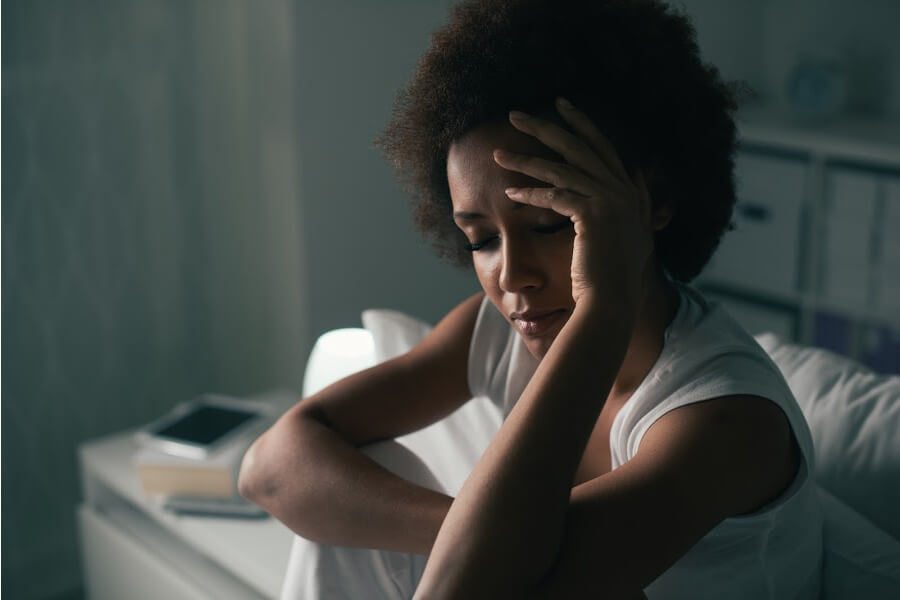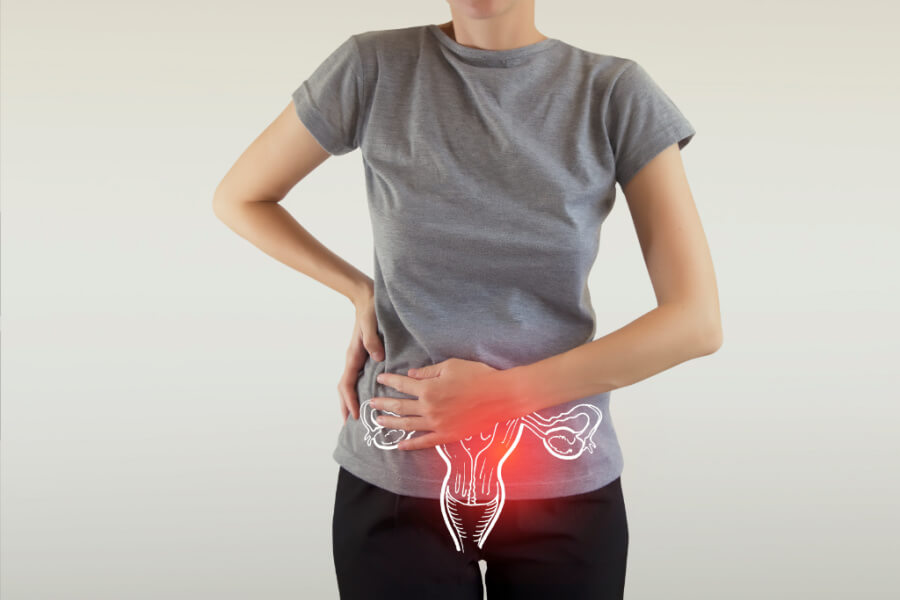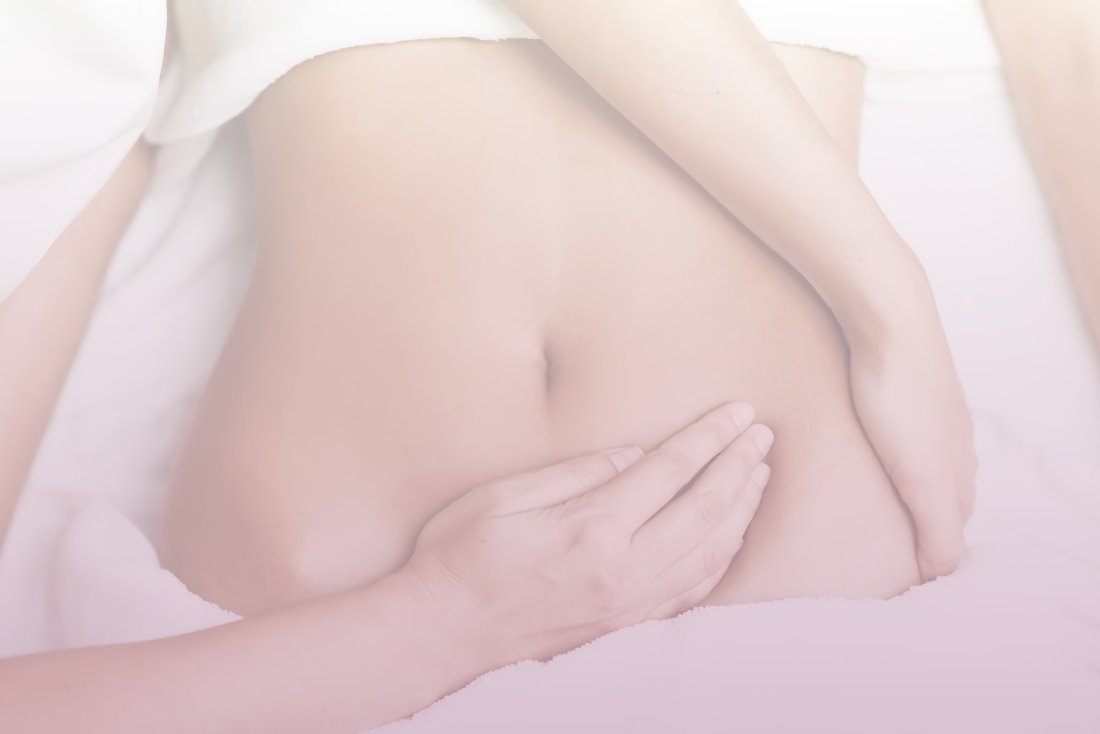Do you ever get a migraine just before or during your period? It can be so debilitating, you just can’t get out of bed (or the bathroom) and it feels like no one understands. Unfortunately, there are a number of causes so it isn’t always easy to pinpoint what the cause is. Let’s take a look at what the different potential causes are and what you can do about them, and as an added bonus, all of them are great ways of ensuring optimal hormonal and reproductive health.
Is It A Menstrual Migraine Or A “Regular” Migraine?
The tips on this blog are specifically for helping people with menstrual migraines, or even ovulation migraines, however, it is possible to have migraines that are not related to your menstrual cycle. A menstrual migraine is one that appears at a similar point in your cycle, usually just before your period, but it could be during your period or even around ovulation.
It might not be every cycle, but when it does appear, it appears at the same time in your cycle.
There are other migraines that can occur due to other things such as food, drink or environmental triggers, or for other reasons known or unknown. Whilst some of these tips may help them, they are not specific to that scenario.
How can you tell whether your migraines are connected to your cycle? Both by keeping a migraine diary and tracking your cycle.

Migraine Diaries
A migraine diary can be as simple or as complex as you want. At a basic level, you can just mark on the calendar app on your phone when you have a migraine. However, I find the following additions useful too:
- what time your migraine started and finished.
- the intensity of the migraine eg if you were to do a pain score of 0-10, 0 being no pain, 10 being the worst pain imaginable, where would you place that pain?
- what is the quality and location of the pain? Sharp shooting pains, squeezing or throbbing pain. Is it in a band around a specific area or a tiny area behind the eye? These are just examples, you can describe the pain in whatever term makes sense for you.
- did you get any symptoms or “aura” before, during or after the migraine eg fairy lights, disturbed vision, nausea, paralysis? Also note when they started and stopped and whether they responded to medications or interventions.
- did he migraine respond to medications or other interventions (heat, dark room, essential oils) and note what worked and what didn’t?
- what did you eat that day? Some foods can trigger migraines and sometimes we need a few food lists on days of migraines to see patterns.
- what medications you have taken that day?
- what you have drunk during the day? (Alcohol and caffeine can be triggers for some people)
- how much sleep did you get the night before?
- what exercise did you do that day, when and for how long?
- did you have intercourse that day (the hormones can affect the brain and cardiovascular system)?
There are other things you could add, and your neurologist looking after your migraines should hopefully be giving you specific advice. The next thing to do is see if it correlates to your menstrual cycle. Ideally, you would be using a sympto-thermal method to track your menstrual cycle, however, you can do some very basic charting using an app or my ovulation toolkit.

What Causes Menstrual Migraines?
Here are some of the causes (and some fixes) that I have seen and recommended to my clients:
1. Retroverted or Retroflexed Uterus
This is when the uterus is tipped further back or sometimes even retroflexed which is when it is also bent over backwards. This can put pressure on the rectum and spine, which most of the time isn’t an issue, however, in some women, when their wombs’ are the most full and the area is most congested with lymphatic fluid, particularly just before and during the first few days of menstruation, this extra pressure on the spine with result in a migraine.
The top diagram below is a uterus in its normal position, the too below pictures are where the uterus is tilted backwards, it can press against the rectum and place pressure on the rectum and spinal cord.

Copyright Rachel Dutton 2016. All Rights Reserved.
Fix: Get more movement in to your pelvis such as walking regularly, especially if you have a desk job. Swimming, yoga and pilates are also great ways to get more movement into your pelvic and abdominal areas.
Get a Womb Massage which is designed specifically to help the womb and reproductive system, especially womb alignment (plus it feels amazing having someone massage your belly). Castor oil packs and womb steams can also help with womb alignment. I also teach online how to do a self womb massage, you can book in here.
2. Other Pelvic Injuries or Postural Issues
Other pelvic injuries, adhesions, trauma, procedures and surgeries can also cause similar problems in that they refer upwards causing migraines. This can be endometrial, injury or surgical adhesions or even piercings in some cases. Also surgical births or birth trauma and even bashing the tail bone from a fall or horse riding can cause irritation that refers upwards.
Fix: whilst some of the womb placement issues fixes may help, if any of the above apply to you and your circumstances, I highly recommend seeing a Women’s Health Physiotherapist (UK terminology), or Pelvic Health Physical Therapist (US terminology), as they are specialists with post graduate training in this area.
They are very aware of how vulnerable we feel “down there”, and provide comprehensive assessments of the whole pelvis, not just the pelvic floor. They can work with your doctor to refer you on, carry out treatments and give you at home exercises.
I wish that everyone had access to these professionals, not just those with post partum or prolapse issues, which seems to be the main provision on insurance. However, you can find private providers which I highly recommend, for your long term pelvic health care.
3. Magnesium Deficiency
This is considered to be a common cause for many migraines as well as menstrual migraines, but magnesium deficiency can also be a cause of menstrual cramps, so it is an important mineral for us menstruators anyway.
Fix: Magnesium intake in whole foods such as cacao, leafy vegetables, beans and nuts are a great way to increase magnesium.
The studies on magnesium supplementation with migraine done by the migraine trust show the magnesium in whole food form does not have any adverse effects. In some cases supplements can help, (although some can cause stomach issues, so I prefer magnesium glycinate in this case), but some people find that it can make it worse, so if you are one of those people, stick to whole food forms of magnesium. I also really like to bathe in Epsom salts (or even use a spray or foot soak) which is another way to top up magnesium levels.

4. Inflammation
Inflammation has several different effects on period pain, from increasing prostaglandins (chemicals that cause uterine cramps that can cause period pain), to increasing other pain responses, which in some women can trigger migraines.
A number of things that can cause inflammatory responses include red meat and processed meats (which are shown to increase arachidonic acid in some people, which is found in higher amounts in women with period pain and menstrual migraines). High intake of omega 6 fats skewing the omega 3:6 ratio will also raise inflammation. Stress and blood sugar imbalances are known to trigger inflammatory responses and so are not to be ignored.
Fix: There are a number of things you can do to decrease inflammation both throughout the month and in the lead up to your period:
- Reduce or offset your stress. Stress off setting is where you can’t reduce stressful activities, but instead add in nourishing activities and practices such as deep slow breathing, meditation, walking in nature, arts and crafts, yoga or anything else that you find resets your day.
- Modulate your response to stress. Stress is genuinely helpful when we are under threat and need to escape, but our bodies also increase cortisol to help us perform under pressure. Tough deadlines, giving a presentation, taking part in a sport competition or a recital are all situations in which our bodies can decide it is helpful to amp up the stress. However, the difference between the person who succeeds and the person who collapses, is learning to channel that stress into performance and recognising it is there to help you. It sounds a bit odd, but think about performers who no longer get stage fright, or emergency responders appearing calm as they zoom along at high speeds on narrow streets weaving around the traffic. They have learnt to channel the nerves from the stress into something practical.
- Increase your Omega 3 fat intake with oily fish such as wild salmon and sardines, flaxseeds, chia seeds and walnuts.
- Increase your curcumin intake. Curcumin is found in turmeric. In the lead up to your period, you can add turmeric into your food, here are some ideas and also turmeric paste or golden paste.

5. Progesterone & Oestrogen Levels
Hormones, particularly those that affect the menstrual cycle have many different potential affects on migraines. There are a number of different ways in which your hormones can play into getting migraines and interestingly, two thirds of women find their migraine symptoms improved post menopause.
It appears that the brain is very sensitive to changes in oestrogen levels, and whilst there are a number of theories on whether high, low hormone levels trigger the migraines, there does seem to be a strong enough link to oestrogen to know it is somehow involved.
It would appear it is the oestrogen fluctuations that can precipitate many migraines, particularly any sharp drop in oestrogen, such as just before ovulation, and in the lead up to the period being key points, that clients often report migraines.
There are also reports in some people that migraines get worse in early pregnancy, but disappear in late pregnancy, and in some people, there is no difference or it gets worse at different times.
There is also the issue of the progesterone to oestrogen ratio in the second half of the luteal phase (the week leading up to your period), which is if out of whack, is likely to be a hormonal imbalance called oestrogen dominance and the drop in hormone levels, both oestrogen and progesterone that trigger menstruation, which is normal. However, just trying to boost your oestrogen or progesterone doesn’t always help and can often make the migraines worse. Especially as we are more slightly insulin resistant in this phase of the menstrual cycle, which can raise inflammation (see above section).
HRT can initially cause greater hormonal fluctuations, so in the short term might make migraines worse, and in the long term can make things better or worse depending on the person. Likewise, the pill and other hormonal contraceptives can make migraines better or worse depending on the person. An important note, if you get migraine with aura, some contraceptives may not be appropriate or safe for you, as they can increase your stroke risk. Usually, these are oestrogen containing contraceptives, but please, if this applies to you, speak to your doctor ASAP.
Fix: First of all, see if there is a correlation between your cycle and your migraines. I recommend keeping a migraine diary and tracking your cycle and seeing if they overlap. Once you have established there is a correlation (and there might not be), you want to take a look at your hormone issues. You can either take my quiz, or take a look at my oestrogen dominance blog and see if that sounds familiar and follow some of the tips there.
Ideally though, it is worth doing a DUTCH test and figuring out your hormones specifically and then we can make specific recommendations.

6. Histamine Levels
Lucky us, we get a menstrual cycle and with that the odd connection between oestrogen and histamine, (just when you thought more hormonal implications couldn’t be involved). Histamines are known to induce some headaches and migraines and whilst antihistamines are not shown to help, it is interesting to see the link between oestrogen and histamine.
Histamine is the immune system’s response to an allergen and is responsible for getting that allergen out the body. For example it can make your eyes tear up to clear it from the eyes, or sneeze to to expel the allergen from the airway before it gets too far in to the body. Of course there are far more serious symptoms, but most of us have at least experienced these symptoms.
Oestrogen stimulates the mast cells to products more oestrogen and down-regulates the enzyme (DAO) that clears histamine. If that wasn’t bad enough, histamine stimulates the ovaries to make more oestrogen (which then tells the mast cells to make more histamine and reduces ability to clear histamine further), creating a viscous circle.
What about progesterone? Well progesterone inhibits histamine secretion and helps to clear histamine. OK, so what could this mean for the menstrual cycle, when we are in the follicular phase, our oestrogen goes up, our histamine levels may also rise and that could potentially trigger a migraine in some people. Also in the luteal phase, if you have oestrogen dominance, then you may also have higher histamine levels and symptoms.
Funnily enough, histamine intolerance symptoms are very similar to those of PMS, PMDD and endometriosis, so it may be that this is an issue for you anyway, if you have any of these conditions.
Fix: there are two main prongs to this area, once is sort out the underlying hormonal imbalances as per the above point. Particularly make sure your oestrogen is in check and your progesterone levels are adequate.
Also, you can look at getting your histamine under control and seeing if that helps your migraines. Some ways you can start include:
- do an elimination diet, this is the gold standard of food intolerance.
- reduce high histamine foods in your diet such as alcohol, dairy, caffeine, fermented foods, processed and smoked meats, shellfish and dried fruits. If you are investigating your migraines, this list may look familiar because they are typical migraine trigger foods you are told to look out for.
- if you have known allergies or allergic conditions, manage them as best as you can.

Other Thoughts On Migraines
It is super important to note that there are other migraine causes and not all migraines are not related to the menstrual cycle, and you may also get a combination of menstrual migraines and other cause related migraines.
Also, migraines are highly personal and what may work for one person, may not help another at all. You may also need different combinations of fixes to find the optimal mix of interventions to relieve or improve your migraines.
Finally, if you have not seen your doctor about your migraines yet, it is important to do so, because some migraines can have serious underlying causes or need monitoring, so it is important to make sure you get them checked out.




